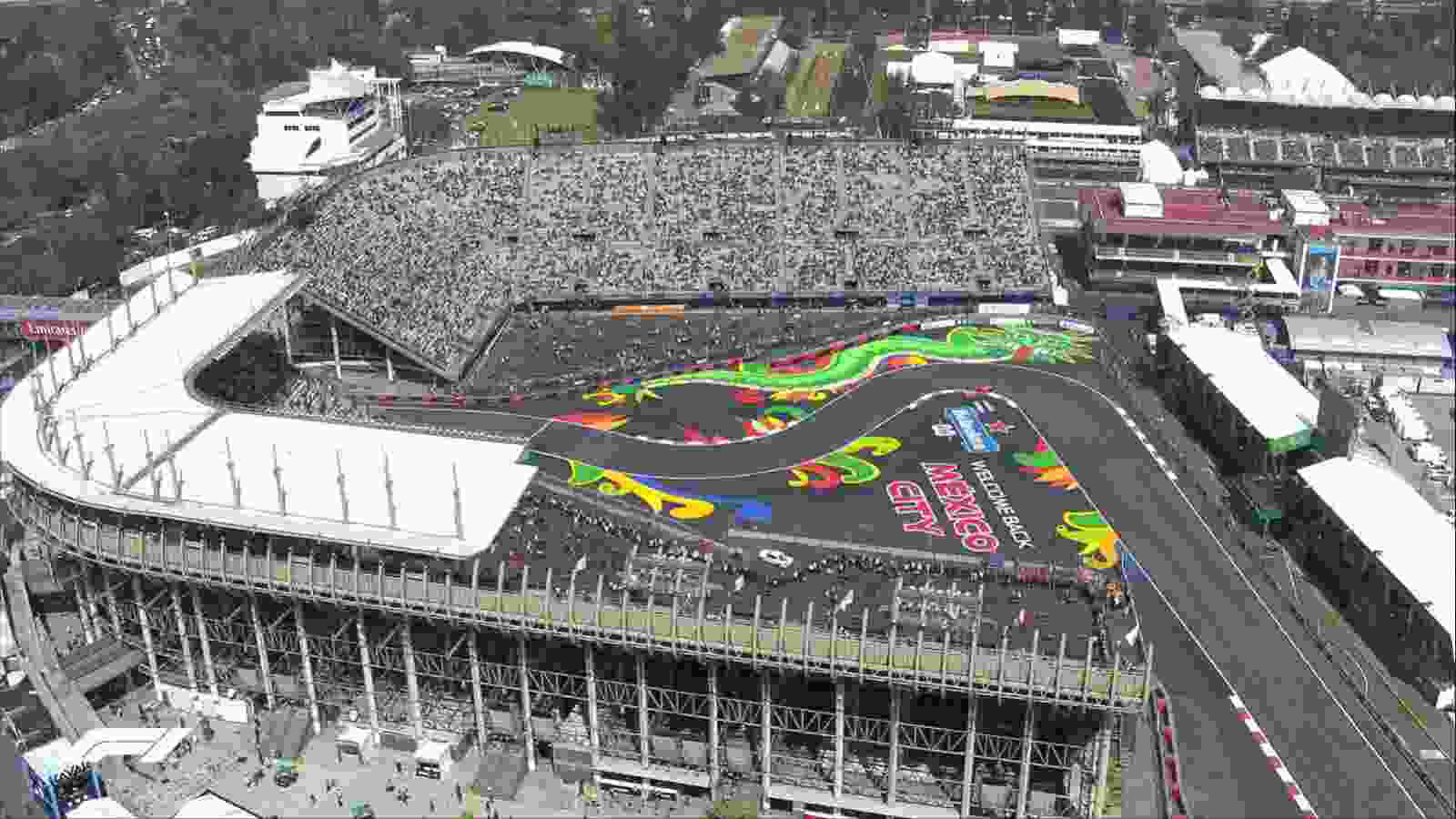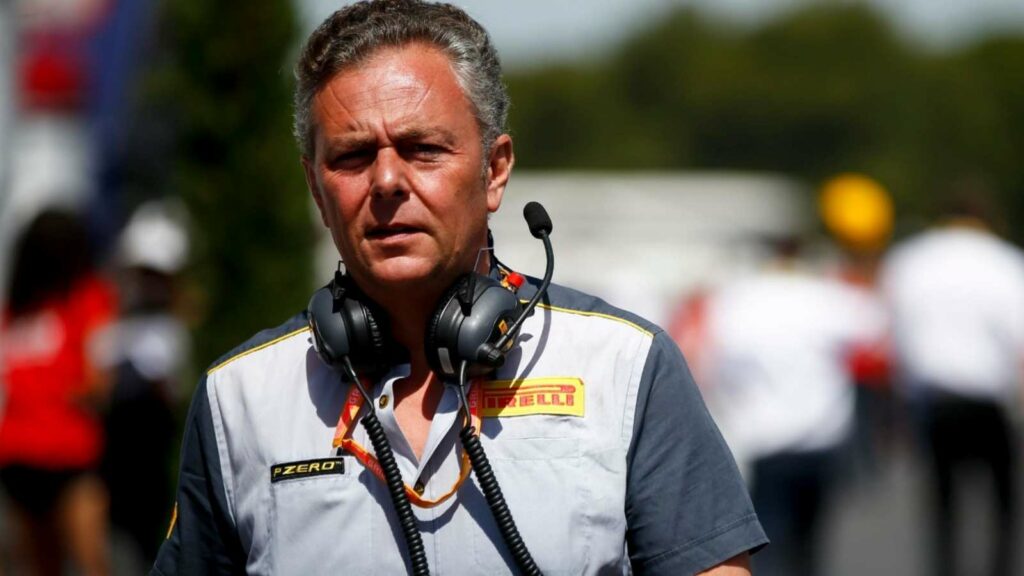What makes the Mexican GP ‘unique’ – and what challenges does that pose for the teams and the drivers?

Mexican GP
The Mexican Grand Prix, officially now known as the Mexico City Grand Prix is unique. Why? Quite simply, it is the highest track on the calendar. The average elevation of Mexico City is 2,240 meters (7,350 feet). For reference, that is higher than the Indian hill stations of Darjeeling, and Kodaikanal and around the same as Ooty. Imagine racing there!
The elevation of the track itself at its highest point is 2,229 meters. This is almost three times the next highest Grand Prix on the calendar – Interlagos, in São Paulo is a maximum of only around 781 meters. As you go upwards in altitude, things change quite quickly. The temperature cools down, the air density decreases, while the UV radiation increases. The altitude also affects Formula 1 cars.
Also Read: Who won the first-ever Mexican Grand Prix?
The drag decreases
As the air density decreases with altitude, the drag decreases, and the downforce decreases along with it. Mexico is where the fastest-ever speed in a speed trap was recorded – a whopping 372.5 km/h. This was achieved by Valtteri Bottas, back in 2016, when he was driving for Williams. But the lower air density also means one more thing – the downforce generated by the cars is also lower.
The effects of lower downforce
The higher altitude means that the cars generate lesser downforce. The most obvious effect of this is that the teams have to run higher wing levels. While the top speeds are very high, it still requires a higher downforce setup to control the car better. An example of this can be found in the 2018 Mexican Grand Prix.
Kimi Raikkonen, driving behind Valtteri Bottas, attained a maximum top speed of 366 km/h on the main straight, and had to brake before the 200-meter board. On the other hand, Bottas locked up going into turn 1, and had to go over the grass.
The effect of the high altitude on the engine
The lower air density means that less air is pumped into the engine, so there is a considerable reduction in engine performance, but the thinner air also means lower drag, which helps compensate for this, and means that cars achieve incredibly high speeds in Mexico. Not only that, but it also affects engine cooling.
Due to the higher altitude, less air passes through the car (to be released as ‘hot air), which means that cooling is also considerably reduced. Of course, you cannot have the car overheating, so teams try to prevent that by increasing the size of the air intakes and ducts, but that comes at the cost of aerodynamic performance.
Higher Track Temperatures
While the atmosphere itself gets cooler, the UV radiation increases, as there is less atmosphere available to absorb it. According to the World Health Organization, it UV levels increase around 10 percent every 1000 meters. This means that UV levels in Mexico City will be around 22 percent higher than it would usually be at sea level. This also means that the track temperatures will be higher, despite the ‘mild’ weather.
The challenges at the Mexican GP, as described by Kevin Magnussen

The drivers are also surely affected by the thinner air – there is less oxygen, and Formula 1 cars go at incredible speeds, which is already incredibly strenuous on the body, but the altitude perhaps makes it even worse. Kevin Magnussen, in a Q&A revealed that he had had symptoms from the high altitude.
The lower air density means that even with the higher wings, the cars only have about as much downforce as Monza – considering some other tracks: “It’s a challenge – both physically and technically with the car – cooling is an issue. You don’t have as much downforce, you run a lot of wing on the car and it’s very low density in the air, so you actually have about the same amount of downforce as you have in Monza.”
Magnussen said that the Mexico City Grand Prix is ‘tough’ physically: “That’s why we’ve seen some of the highest top speeds from Formula 1 cars there. It’s tough physically and in the past, I’ve had symptoms from being so high up.” Which is understandable, as despite being amazing athletes – Formula 1 drivers are still humans.
Pirelli CEO expects ‘low grip’ at the Mexican GP

The tyre selection for the Mexican GP is the same as the United States Grand Prix last weekend – C2 (Hard), C3 (Medium), C4 (Soft). However, it poses vastly different challenges. In Pirelli’s preview for the Mexico City Grand Prix, their CEO, Mario Isola discussed this in particular, where he started off by pointing out the differences in between this weekend and the last two:
Isola said: “If you look back at the last two races, Suzuka was all about lateral forces and Austin was well-balanced aerodynamically, but Mexico this weekend focuses on traction and braking. The Hermanos Rodriguez circuit does not offer a lot of grip and the energy demands on the tyres are reasonably low, as the cars do not generate much downforce in the thin air at high altitude, especially in slow corners.”
Driving home the point about the high altitude, he said: The Hermanos Rodriguez circuit does not offer a lot of grip and the energy demands on the tyres are reasonably low, as the cars do not generate much downforce in the thin air at high altitude, especially in slow corners.
He also says that the understeer-y nature of the 2022 cars could possibly lead to ‘sliding’: “This year, the circuit might be more front-limited, as the current generation of car tends to understeer through slow corners – which Mexico has plenty of – and this can lead to some sliding on the front tyres.”
Mario Isola also pointed out that track evolution will be high this weekend, and that understanding the tyre warm-up will be key to success here. So now you know the ‘unique’ challenges that the teams – and the drivers, face at the Mexican GP. We shall find out how exactly it will affect the current generation of cars soon enough.
Also Read: Mexican GP 2022: All about the Formula 1 drivers from Mexico
Also Read: Why is the race track for the Mexican GP known as Autodromo Hermanos Rodriguez?







